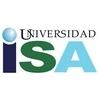Check out what is new in Animal Feed
Find the best technical articles, forums, and videos on Animal Feed at Engormix. Enter now and interact with the world's largest agricultural social network.
I. INTRODUCTION Currently, the majority of feed used in the production of broilers is fed in pelleted or crumbled form. One of the major issues in the manufacture of pellets is the application of high conditioning temperatures. The need to reduce potential levels of feed-borne pathogens such as salmonella and campylobacter for feed safety and to achieve high pellet quality has led to the application of relatively high (between 80 and 90 ºC) conditioning temperatures during...
Comments : 0
Recommendations: 2
.jpg&w=3840&q=75)
Phil Wellhausen (Applications Manager, CPM) discusses steam, and dry and wet choke points, during FIGAP 2024 in Mexico....
Comments : 1
Recommendations: 0
.jpg&w=3840&q=75)
Phil Wellhausen (Applications Manager, CPM) explains the reasons for good conditioning and how to check and maximize retention time, during FIGAP 2024 in Mexico....
Comments : 2
Recommendations: 2
.jpg&w=3840&q=75)
Phil Wellhausen (Applications Manager, CPM) discusses conditioning dynamics and how pellets improve feed conversion, during FIGAP 2024 in Mexico....
Comments : 1
Recommendations: 0
Introduction Corn processing plays a pivotal role in the bioethanol industry, utilizing both wet and dry methods to extract valuable components from corn. Understanding the strengths and weaknesses of each approach is essential for producers aiming to optimize efficiency and product quality, particularly in the production of Distillers Dried Grains with Solubles (DDGS). In this article, we explore the two processing methods, their implications for DDGS production, and the...
Comments : 0
Recommendations: 1
In feed formulation, Six Sigma methodology helps achieve high-quality standards by minimizing variability. Applying it to ingredients like maize and soybean meal allows us to control nutrient content precisely, ensuring consistency in feed quality. A bell curve (normal distribution) visually represents the variability in a nutrient (like crude protein, CP) and helps identify a target range that can maximize feed efficiency while minimizing risks of nutrient excess or deficiency. #...
Comments : 0
Recommendations: 3
A growing population that we have to feed, by 2050 approximately 9 billion inhabitants. Climate change, global warming, atmospheric phenomena (hurricanes, floods, prolonged drought that drastically affect grain harvests). Overfishing in our seas that is decimating and extinct some marine species. ...
Comments : 0
Recommendations: 0
I. INTRODUCTION The meat chicken industry is growing rapidly as a result of an increasing population, relatively low production costs and excellent marketability with regards to affordability, sustainability and minimal religious restrictions. Poultry diets with lower crude protein (CP) have generated global interest from the meat chicken industry due to the benefits concluded by published literature. Low protein (LP) diets have been identified to lower feed costs, improve feed...
Comments : 0
Recommendations: 0
I. INTRODUCTION Poultry feed is routinely pelleted for many reasons such as increased feed intake, feed efficiency, and feed hygiene (Abdollahi et al., 2013). However, pelleting is not without its drawbacks, particularly when using higher pelleting temperatures (Abdollahi et al., 2010). The industry has been trending towards ever higher conditioning temperatures due, at least in part, to efforts to improve feed hygiene and thus decrease reliance on in-feed antibiotics for prevention...
Comments : 0
Recommendations: 0
Introduction: 1. The Economy of the Dominican Republic is the 7th economy in Latin America, being also the largest and most important in all of Central America and the Caribbean, occupying first place and obtaining regional leadership. 2. The annual production of balanced feed is approximately 2.4 million tons3. Current monthly production: 3. -22.5...
Comments : 1
Recommendations: 1
.jpg&w=3840&q=75)
Miguel Ángel López, Pet Food Consultant, talks about some trends in Pet Food and building nutrition for our pets
...
Comments : 0
Recommendations: 0
.jpg&w=3840&q=75)
Dr. Charles Starkey (North American Renderers Association - NARA) talks about the sustainable contribution of amino acids from animal proteins vs. marine proteins for livestock...
Comments : 0
Recommendations: 0
Introduction With the rise of antimicrobial resistance and the more frequent identification of multidrug resistance strains, as well as a lack of research into the development of new antimicrobial agents, scientists are increasingly interested in tests of active substances derived from plants due to their ease of availability, safety, and cost effectiveness (Albert, 2021). The use of medicinal plants in animal nutrition has increased due to their positive properties such as...
Comments : 0
Recommendations: 0
1 - INTRODUCTION Fusarium graminearum (teleomorph Gibberella zeae) is an ascomycete fungal pathogen and the main causative agent of Fusarium head blight (FHB), or scab disease, on wheat. F. graminearum infects wheat floral tissues at flowering (anthesis), secreting many cell wall-degrading enzymes (CWDEs), other proteins and metabolites as well as mycotoxins that contaminate the developing grain, rendering it unsuitable for both human and livestock consumption (McMullen et al.,...
Comments : 0
Recommendations: 0
The continuous pursuit of a sustainable food system remains a global priority, with increased food security and minimization of postharvest loss as primary objectives. This is a critical issue, as recent estimates from the Food and Agriculture Organization (FAO) Reports on the State of Food Security and Nutrition in the World 2023 indicate that hunger affected a staggering number of individuals ranging from approximately 691 million to 783 million people in 2022, with an approximate midrange...
Comments : 0
Recommendations: 1
.jpg&w=3840&q=75)
Dejan Miladinovic (Head of Centre for Feed Technology, Norwegian University of Life Sciences) explains how this gap impacts pellet quality, energy efficiency, and roller and die wear, in this Engormix interview....
Comments : 0
Recommendations: 0
.jpg&w=3840&q=75)
Dejan Miladinovic (Head of Centre for Feed Technology, Norwegian University of Life Sciences) offers his vision for the future of feed mills. He comments on automation, data optimization, real-time monitoring, smart sensors, and sustainability, in this Engormix interview....
Comments : 2
Recommendations: 2
INTRODUCTION In recent years, the emergence of new products for human and animal consumption has intensified, which could be produced exclusively through the extrusion process. In particular, those produced with high levels of protein, derived from pulses, known as plant based. Several products of this type now available in supermarkets imitate pieces of meat, whether analogous to steaks or fillets, whether chicken, beef, fish, or even imitating seafood. The upper layer of fish...
Comments : 1
Recommendations: 0
.jpg&w=3840&q=75)
José Henrique Stringhini (Federal University of Goiás) comments on the advantages of butyric acid compared to other additives and offers practical recommendations for its use in water or feed, during this Engormix interview....
Comments : 2
Recommendations: 3
The Institute for Feed Education and Research (IFEEDER) has taken another step toward advancing sustainability within the animal food industry with the release of new industry sustainability materials . Representing both U.S. and Canadian industry members and stakeholders, these resources, developed in collaboration with the Context Network and...
Comments : 0
Recommendations: 0




.jpg&w=3840&q=75)


















